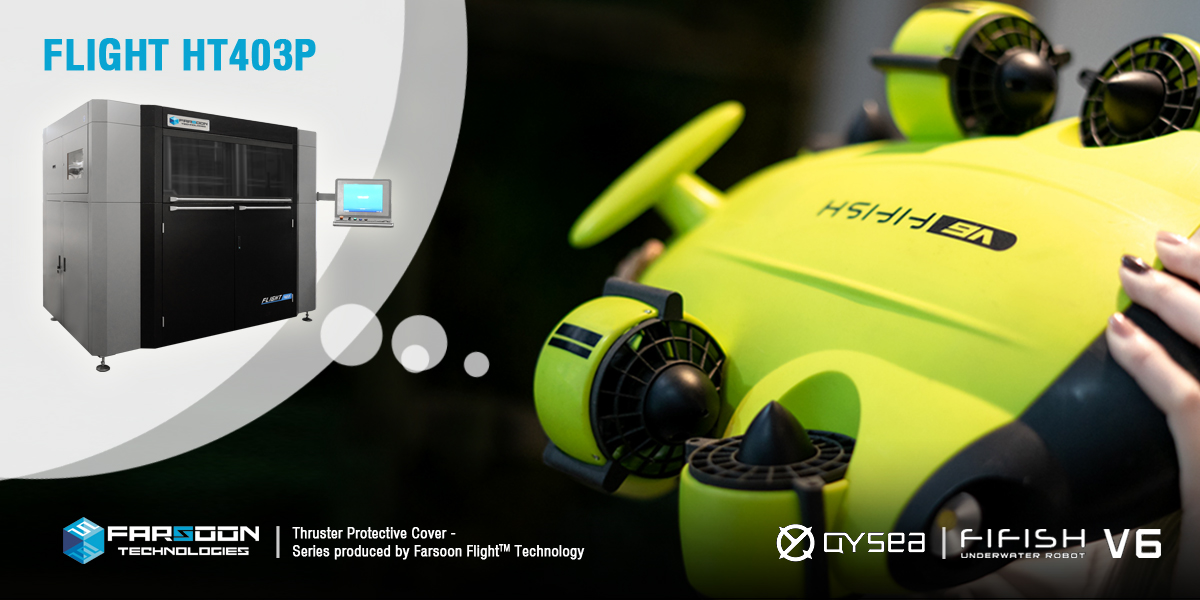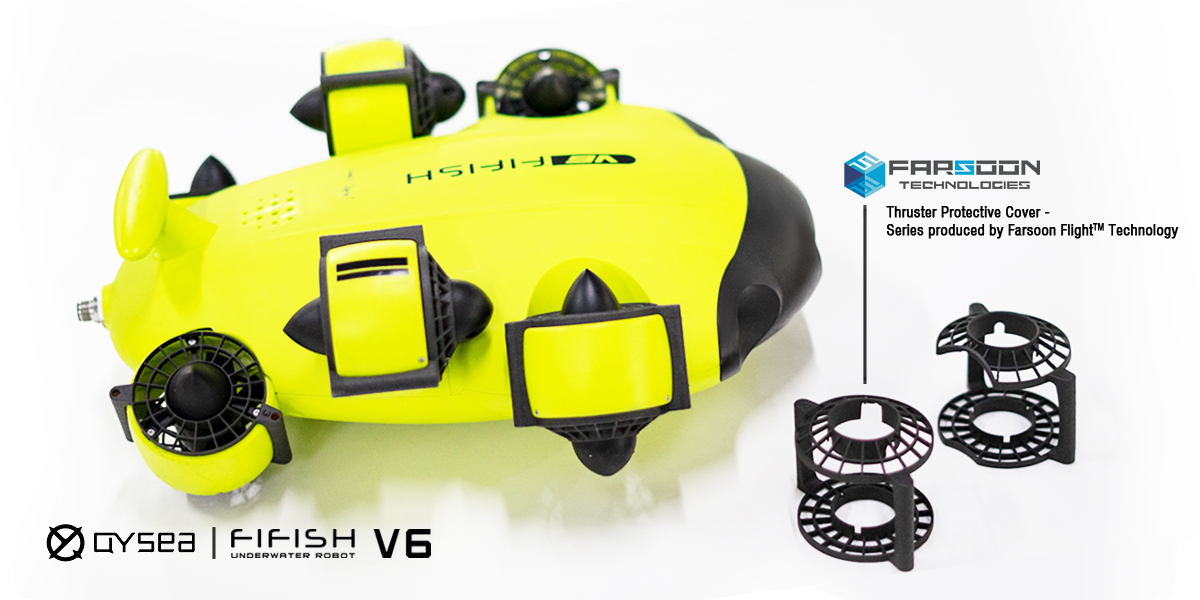Remote Operated Vehicle (ROV) manufacturer QYSEA is working with Chinese SLM and SLS 3D printer manufacturer Farsoon to produce protective covers for its FIFiSH V6 underwater ROV.
These customized covers, used for protecting the ROV’s smart vector thrusters, are created using Farsoon’s Flight additive manufacturing technology. They provide the mechanical strength and durability necessary to prevent damage to the thruster during dives of up to 100 meters, and temperatures ranging from -10 to 60°C.
Given QYSEA’s quickly growing product line, 3D printing has become a valuable alternative supply line for the company, and a way to reduce its inventory costs. By working with Farsoon, QYSEA has reportedly reduced the development time of the customized protective covers from over 30 days to below 7 days, and cut regular injection molding production costs of $50,000 by 80 percent.
Ms. Li, deputy general manager of QYSEA said, “3D printing technology offers infinite possibilities for future underwater ROV innovation. Farsoon’s Flight Technology opened our eyes to a new level of advanced production speed, optimal yield and freedom of customization.”
“Now we have full confidence to achieve faster product development and additive series production at an economical cost.”

Flight technology and advances in laser sintering
Flight technology, introduced by Farsoon in 2019, is a selective laser sintering (SLS) additive manufacturing process that replaces CO2 laser technology with fiber lasers. This is intended to increase the longevity and energy absorption and expand the range of materials Farsoon’s systems are able to process.
In the Flight-enabled version of Farsoon’s HT403P printer, the 100W CO2 laser is replaced with a 500W fiber laser, which is able to transform black polyamide nylon powder into plastic parts at speed. Fiber lasers offer improved energy distribution to the material and a smaller laser spot size, allowing the powder to be sintered more quickly, accelerating productivity compared to the standard HT403P system.
The FIFiSH is the latest application of Farsoon’s Flight Technology, with the firm having announced a development agreement with Swiss plastic 3D printing provider Rapid Manufacturing AG last October. Although Flight Technology is not yet commercially available, Farsoon is currently welcoming customers to an early adopter program.
Many other additive manufacturing companies also use fiber lasers in their SLS 3D printing technologies. German 3D printer manufacturer Trumpf introduced its Laser Metal Fusion Technology which uses fiber laser sintering on its TruPrint 1000 and 3000 series of printers.
Elsewhere, German AM systems manufacturer EOS announced at Formnext 2018 that it was also aiming to achieve high speed and high volume production through developing its LaserProFusion SLS technology. This process uses 1 million diode lasers to achieve a maximum total output of 5kw, which significantly shortens exposure time regardless of the components.

The FIFISH V6 and Flight technology
QYSEA Technology, founded in 2016, specializes in the manufacture and sale of underwater ROVs for consumer and industrial use, and worked with WeNext Technology, an internet and manufacturing additive manufacturing service from China, to create the project.
The FiFISH’s vector thruster system is responsible for driving its rapid omnidirectional movements, and the design consists of an embedded thruster, a circular motor, and an enclosing protective cover. Electrically driven, the circular motor pushes the rotor blades located in the center of the engine pump cavity to generate thrust.
The 3D printed protective covers are a key design element to avoid potential damage to the thruster caused by impacts, collisions or fouling during the diving process.
The processing and reduced part costs facilitated by Farsoon’s 3D printing technology meant that QYSEA was able to produce more than 30,000 of these covers over the course of 2019.
You can now nominate for the 2020 3D Printing Industry Awards. Cast your vote to help decide this year’s winners.
To stay up to date with the latest 3D printing news, don’t forget to subscribe to the 3D Printing Industry newsletter or follow us on Twitter or liking our page on Facebook.
Looking for a job in the additive manufacturing industry? Visit 3D Printing Jobs for a selection of roles in the industry.
Featured image shows the FIFiSH V6, produced in part by Farsoon’s 3D printing technology. Photo via Farsoon.



